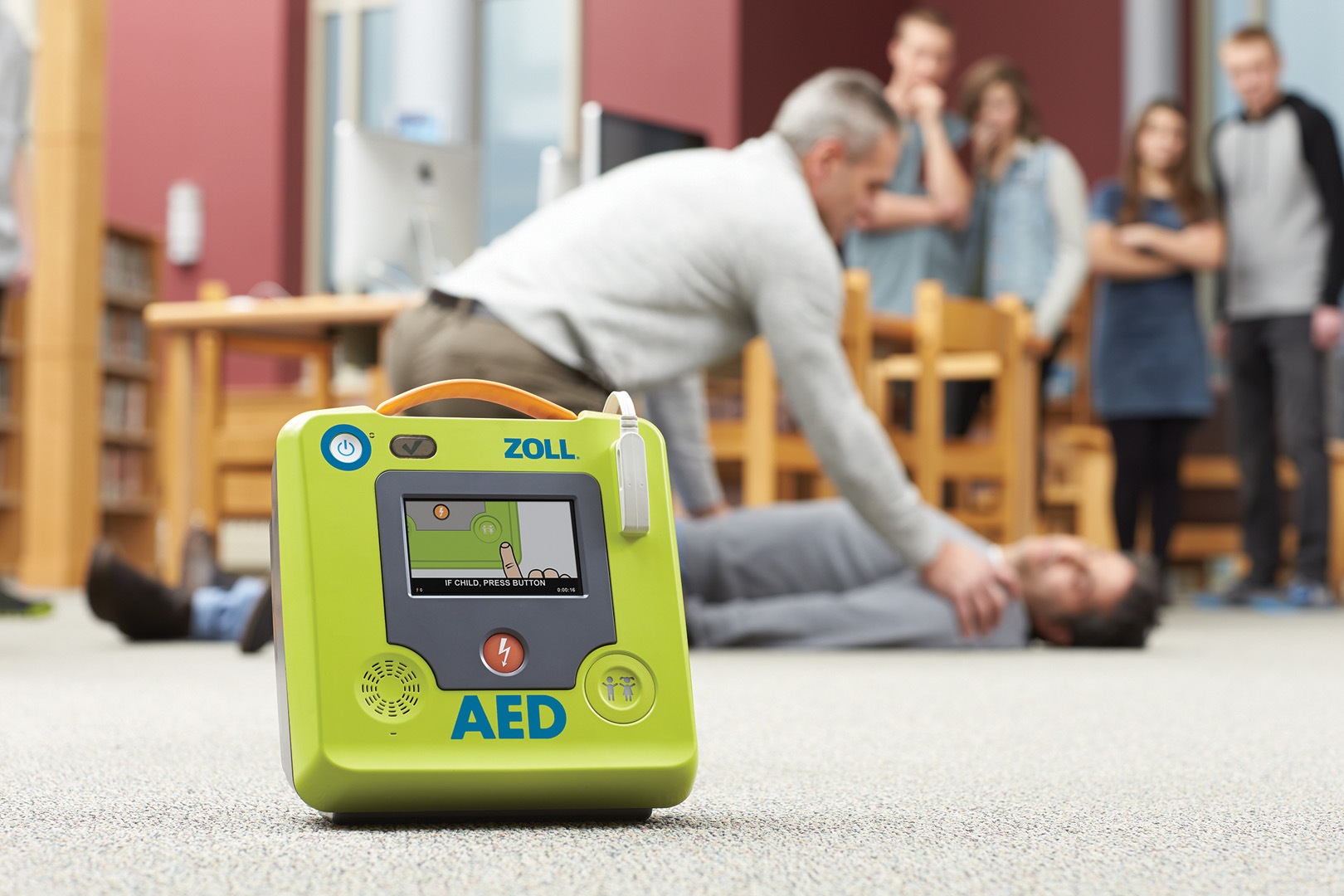
Defibrillator: what it is, how it works, price, voltage, manual and external
Defibrillator refers to a particular instrument capable of detecting alterations in cardiac rhythm and delivering an electric shock to the heart when necessary: this shock has the capacity to re-establish ‘sinus’ rhythm, i.e. the correct cardiac rhythm coordinated by the heart’s natural pacemaker, the ‘strial sinus node’
What does a defibrillator look like?
As we shall see later, there are various types. The most ‘classic’ one, the one we are used to seeing in films during emergencies, is the manual defibrillator, which consists of two electrodes that must be placed on the patient’s chest (one to the right and one to the left of the heart) by the operator until the discharge is delivered.
QUALITY AED? VISIT THE ZOLL BOOTH AT EMERGENCY EXPO
What types of defibrillators exist?
There are four types of defibrillators
- manual
- external semi-automatic
- external automatic;
- implantable or internal.
Manual defibrillator
The manual type is the most complex device to use since any assessment of cardiac conditions is completely delegated to its user, as is the calibration and modulation of the electrical discharge to be delivered to the patient’s heart.
For these reasons, this type of defibrillator is only used by doctors or trained healthcare professionals.
Semi-automatic external defibrillator
The semi-automatic external defibrillator is a device, as opposed to the manual type, capable of operating almost completely autonomously.
Once the electrodes have been correctly connected to the patient, by means of one or more electrocardiograms that the device performs automatically, the semi-automatic external defibrillator is able to establish whether or not it is necessary to deliver an electric shock to the heart: if the rhythm is actually defibrillating, it warns the operator of the need to deliver an electric shock to the heart muscle, thanks to light and/or voice signals.
At this point, the operator only has to press the discharge button.
An extremely important factor is that only if the patient is in a state of cardiac arrest will the defibrillator prepare to deliver the shock: in no other case, unless the device malfunctions, will it be possible to defibrillate the patient, even if the shock button is pressed by mistake.
This type of defibrillator is therefore, in contrast to the manual type, easier to use and can also be used by non-medical personnel, albeit suitably trained.
Fully automatic defibrillator
The automatic defibrillator (often abbreviated to AED, from ‘automated external defibrillator’, or AED, ‘automated external defibrillator’) is even simpler than the automatic type: it only needs to be connected to the patient and switched on.
Unlike semi-automatic external defibrillators, once the state of cardiac arrest is recognised, they proceed autonomously to deliver the shock to the patient’s heart.
The AED can also be used by non-medical personnel who have no specific training: anyone can use it simply by following the instructions.
Internal or implantable defibrillator
The internal defibrillator (also called implantable defibrillator or ICD) is a cardiac pacemaker powered by a very small battery that is inserted close to the heart muscle, usually under the collarbone.
If it registers an abnormal frequency of the patient’s heartbeat, it is able to independently deliver an electric shock to try to bring the situation back to normal.
The ICD is not only a pacemaker in its own right (it has the ability to regulate the heart’s slow rhythms, it can recognise a heart arrhythmia at high rates and initiate electrical therapy to resolve it before it becomes dangerous for the patient).
It is also a real defibrillator: the ATP (Anti Tachy Pacing) mode often manages to resolve ventricular tachycardia without the patient feeling it.
In the most dangerous cases of ventricular arrhythmia, the defibrillator delivers a shock (an electrical discharge) that resets the heart’s activity to zero and allows the natural rhythm to be restored.
In this case, the patient feels a shock, a more or less strong jolt in the centre of the chest or a similar sensation.
Defibrillators: voltages and discharge energy
A defibrillator is generally powered by a rechargeable battery, either mains-powered or 12-volt DC.
The operating power supply inside the device is of the low-voltage, direct-current type.
Inside, two types of circuits can be distinguished: – a low-voltage circuit of 10-16 V, which affects all the functions of the ECG monitor, the board containing the microprocessors, and the circuit downstream of the capacitor; a high-voltage circuit, which affects the charging and discharging circuit of the defibrillation energy: this is stored by the capacitor and can reach voltages of up to 5000 V.
The discharge energy is generally 150, 200 or 360 J.
Dangers of using defibrillators
Danger of burns: in patients with conspicuous hairiness, a layer of air is created between the electrodes and the skin, causing poor electrical contact.
This causes a high impedance, reduces the effectiveness of the defibrillation, increases the risk of sparks forming between the electrodes or between the electrode and skin, and increases the likelihood of causing burns to the patient’s chest.
To avoid burns, it is also necessary to avoid electrodes touching each other, touching bandages, transdermal patches, etc.
When using a defibrillator, an important rule must be observed: nobody touches the patient during shock delivery!
The rescuer must take special care to ensure that no one touches the patient, thus preventing the shock from reaching others.
Read Also:
Emergency Live Even More…Live: Download The New Free App Of Your Newspaper For IOS And Android
Proper Defibrillator Maintenance To Ensure Maximum Efficiency
Electrical Injuries: How To Assess Them, What To Do
Study In European Heart Journal: Drones Faster Than Ambulances At Delivering Defibrillators
RICE Treatment For Soft Tissue Injuries
How To Carry Out Primary Survey Using The DRABC In First Aid
Heimlich Maneuver: Find Out What It Is And How To Do It
4 Safety Tips To Prevent Electrocution In The Workplace


